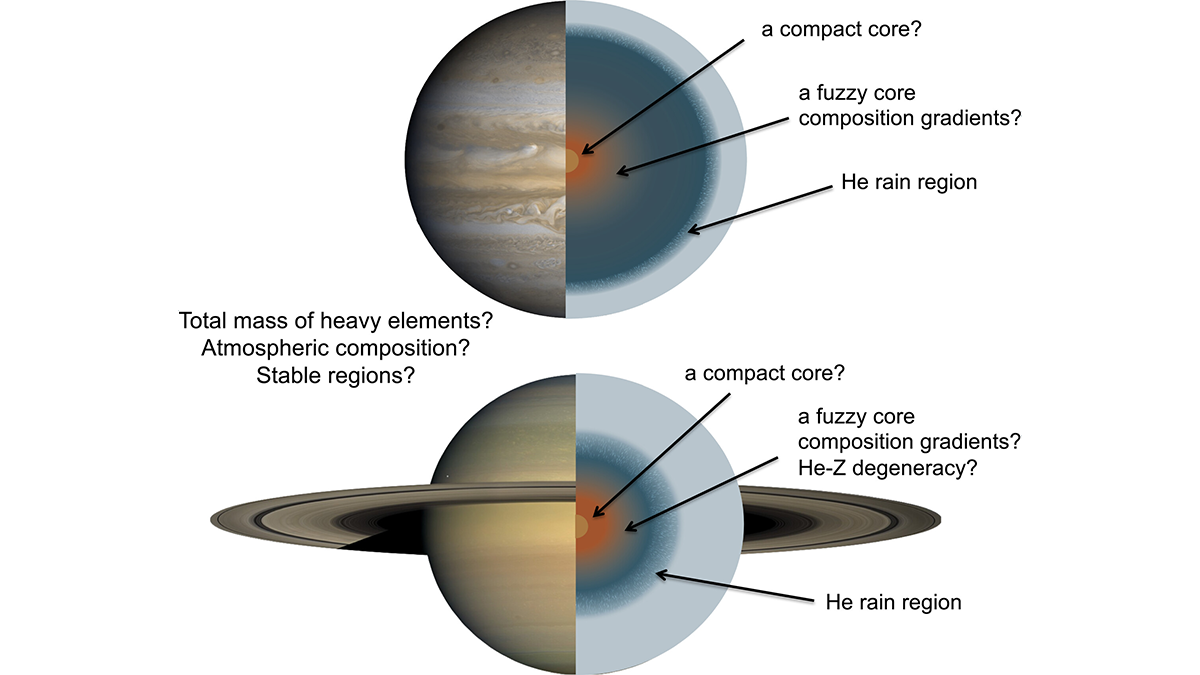Editors’ Highlights are summaries of recent papers by AGU’s journal editors.
Source: AGU Advances
Over the past decade, the gas giants Jupiter and Saturn have been closely studied by the Juno and Cassini spacecraft, respectively. In their Commentary, Helled & Stevenson [2024] summarize the main findings of these campaigns, which result primarily from measurements of gravity and, for Saturn, ring seismology (Mankovich, 2020). The authors focus on the fact that Jupiter and Saturn do not simply consist of a compact, rocky core beneath a hydrogen-rich envelope as early models assumed. Instead, their cores appear to be “fuzzy” (gradational) and large, extending out to about half the planetary radius.
How to explain these fuzzy cores is a puzzle. Are they relics of how the planets were put together in the first place, or has dense material been dredged up over the subsequent 4.5 billion years? Or are they the result of giant impacts? These new observations are sure to prompt a variety of new modeling efforts.
Citation: Helled, R., & Stevenson, D. J. (2024). The fuzzy cores of Jupiter and Saturn. AGU Advances, 5, e2024AV001171. https://doi.org/10.1029/2024AV001171
—Francis Nimmo, Editor, AGU Advances

